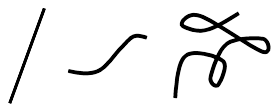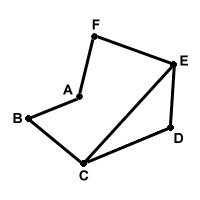Please wait while we process your payment
If you don't see it, please check your spam folder. Sometimes it can end up there.
If you don't see it, please check your spam folder. Sometimes it can end up there.
Please wait while we process your payment

By signing up you agree to our terms and privacy policy.
Don’t have an account? Subscribe now
Create Your Account
Sign up for your FREE 7-day trial
By signing up you agree to our terms and privacy policy.
Already have an account? Log in
Your Email
Choose Your Plan
Individual
Group Discount
Save over 50% with a SparkNotes PLUS Annual Plan!
 payment page
payment page
Purchasing SparkNotes PLUS for a group?
Get Annual Plans at a discount when you buy 2 or more!
Price
$29.99 $22.49 /subscription + tax
Subtotal $44.98 + tax
Save 25% on 2-49 accounts
Save 30% on 50-99 accounts
Want 100 or more? Contact us for a customized plan.
 payment page
payment page
Your Plan
Payment Details
Payment Summary
SparkNotes Plus
You'll be billed after your free trial ends.
7-Day Free Trial
Not Applicable
Renews August 29, 2025 August 22, 2025
Discounts (applied to next billing)
DUE NOW
US $0.00
SNPLUSROCKS20 | 20% Discount
This is not a valid promo code.
Discount Code (one code per order)
SparkNotes PLUS Annual Plan - Group Discount
Qty: 00
SparkNotes Plus subscription is $5.99/month or $29.99/year as selected above. The free trial period is the first 7 days of your subscription. TO CANCEL YOUR SUBSCRIPTION AND AVOID BEING CHARGED, YOU MUST CANCEL BEFORE THE END OF THE FREE TRIAL PERIOD. You may cancel your subscription on your Subscription and Billing page or contact Customer Support at custserv@bn.com. Your subscription will continue automatically once the free trial period is over. Free trial is available to new customers only.
Choose Your Plan
This site is protected by reCAPTCHA and the Google Privacy Policy and Terms of Service apply.
For the next 7 days, you'll have access to awesome PLUS stuff like AP English test prep, No Fear Shakespeare translations and audio, a note-taking tool, personalized dashboard, & much more!
You’ve successfully purchased a group discount. Your group members can use the joining link below to redeem their group membership. You'll also receive an email with the link.
Members will be prompted to log in or create an account to redeem their group membership.
Thanks for creating a SparkNotes account! Continue to start your free trial.
We're sorry, we could not create your account. SparkNotes PLUS is not available in your country. See what countries we’re in.
There was an error creating your account. Please check your payment details and try again.
Please wait while we process your payment

Your PLUS subscription has expired
Please wait while we process your payment
Please wait while we process your payment

Defining a Polygon
When points or lines are arranged in some formation, rarely does it result in a recognizable geometric figure. Well-known shapes like squares and triangles are actually only subsets of larger groups of geometric figures and other collections of points in space.
One of the easiest and most common collections of points in space is a curve. A curve can be any continuous arrangement of points, straight or curved, in space. A curve can be defined as the trace of the motion of a point in space. So a curve is like a path through space by which a point could travel. For our purposes, we'll only consider curves that lie in a plane. A curve is continuous, meaning that there aren't any gaps or holes in the curve; any point on a curve can be reached from another point on the curve without leaving the curve. A dotted line, for example, is not a curve. Here are some examples of curves below.

A curve whose starting point is also its endpoint is called a closed curve. The reason for this is that such a curve encloses a region in the plane. A simple closed curve is an even more specific kind of curve: one that is closed, and doesn't intersect itself. The region enclosed by a simple closed curve is not divided by any part of the curve. Closed curves sometimes intersect themselves, but not simple closed curves. Below are some closed curves and simple closed curves.

A polygon is one type of simple closed curve. A polygon is the union of three or more line segments whose endpoints meet. The segments are called the sides of the polygon. The points at which the segments meet (always the endpoints of the segments) are called vertices. Segments that share a vertex are called adjacent sides. Vertices next to each other are called consecutive vertices. A segment whose endpoints are nonadjacent vertices is called a diagonal. See the picture below.

A polygon is named for its vertices, but the vertices must be listed in order. It doesn't matter which direction the order goes, as long as consecutive vertices are next to each other in the name. The first and last letters in the name, of course, are consecutive vertices, but won't be listed next to each other. For example, the polygon above could be called BCDEFA, or EDCBAF, or some other name incorporating the six vertices in order.
Polygons can be classified and named based on how many sides they have. In the
table below are these names.

Please wait while we process your payment

